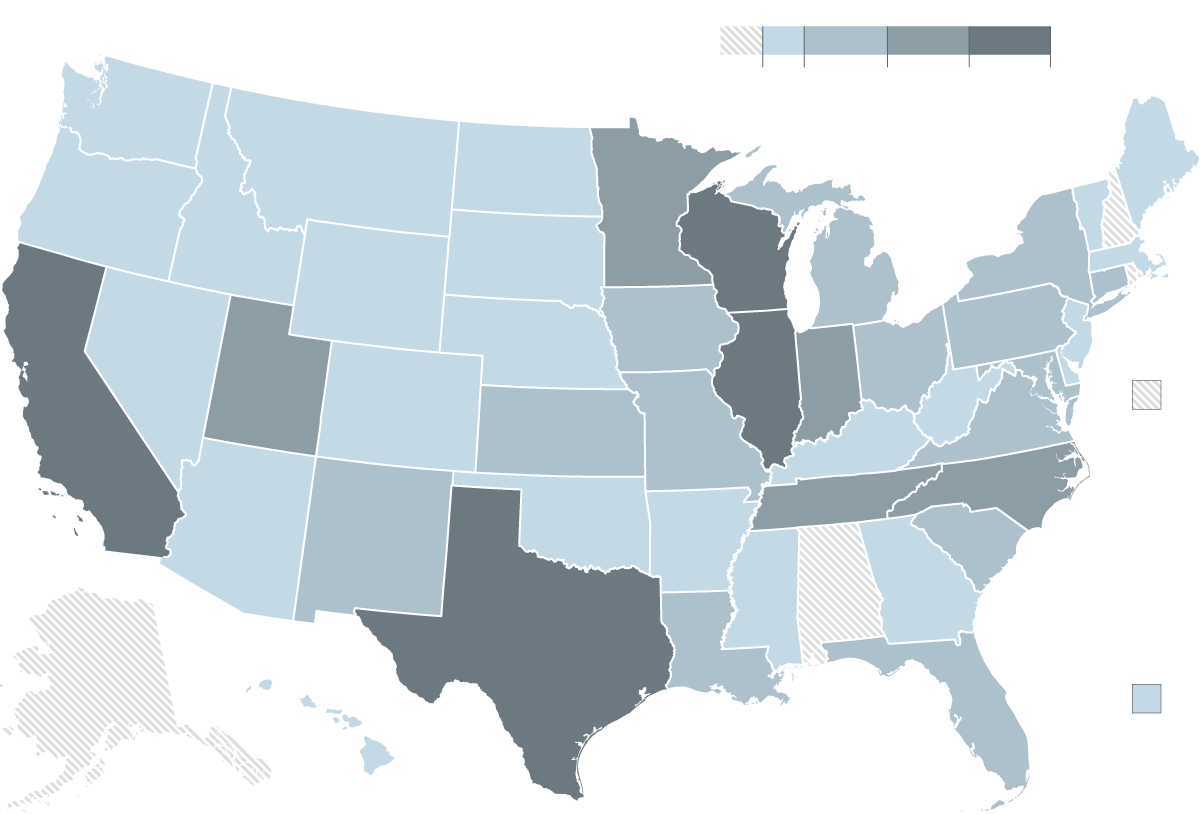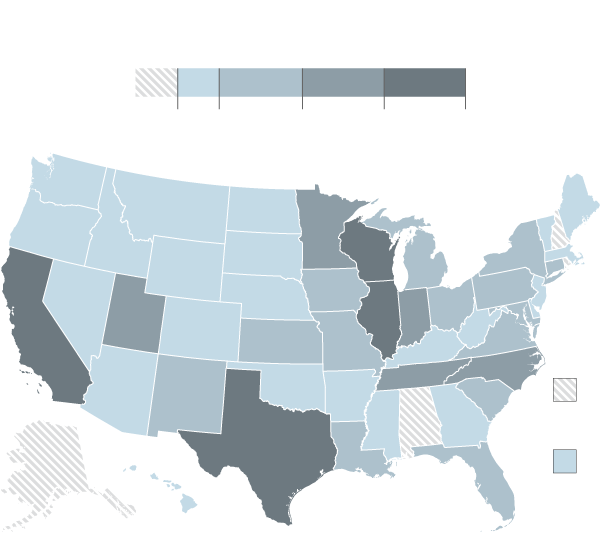Vaping cartridges containing THC and labeled “Dank Vapes,” as well as some other illicit brands, are linked to the severe lung disease that has recently emerged among people who use vaping devices and e-cigarettes to inhale THC or nicotine, or both, health officials said on Friday.
But they also said Dank Vapes appeared to be a label that THC sellers can slap on any product, and is not a specific formulation or a single product. THC is the psychoactive ingredient in marijuana.
“Dank Vapes appears to be the most prominent in a class of largely counterfeit brands, with common packaging that is easily available online and that is used by distributors to market THC-containing cartridges with no obvious centralized production or distribution,” said a report published on Friday by state health officials from Illinois and Wisconsin, and from the federal Centers for Disease Control and Prevention.
The new information comes from researchers’ interviews with 86 people in Illinois and Wisconsin who had become ill after vaping. About 87 percent of those patients had vaped THC cartridges purchased from “informal sources” during the three months before they got sick, and 57 had used Dank Vapes. Other THC brands named included Moon Rocks, Off White, TKO.
But officials said they did not know if vaping illnesses or deaths in other parts of the country were also related to those brands.
In Illinois and Wisconsin, among the patients who reported vaping nicotine, Juul was by far the dominant brand.
The C.D.C. held a briefing on Friday to discuss some of the findings in the health investigations of vaping illnesses that have now been reported in 46 states, involving 805 cases and 13 deaths. Oregon reported a second death on Thursday; state health officials said the person was hospitalized with respiratory symptoms after vaping cannabis products.

Cases of vaping-related lung illness
Virgin
Islands

Cases of vaping-related lung illness
Virgin
Islands

Cases of vaping-related lung illness
Virgin
Islands
Dr. Anne Schuchat, principal deputy director of the C.D.C., called the lung illnesses “serious and life-threatening.” She described the marketplace for vaping products as dynamic, and said there was a large array of products, ingredients, packaging and supply chains, and consumers have no way of knowing just what is in the liquids they are vaping.
Many of the patients throughout the United States had reported using THC products, the agency said. Some patients have said they vaped only nicotine, but the Wisconsin researchers found that some patients who made that claim actually had used THC.
Of 771 patients nationwide, 91 percent had been hospitalized; 69 percent were male and a little more than 60 percent were between the ages of 18 and 34. Of the deaths, the C.D.C. said that nearly 60 percent were men, and the median age was 50 years old.
Both the C.D.C. and the Food and Drug Administration have been investigating the outbreaks of vaping illnesses, in an effort to not only identify the products used but also some of the substances that were inhaled.
The F.D.A. commissioner, Dr. Ned Sharpless, told a congressional panel on Wednesday that the agency had been testing vaping liquid provided by people who got sick.
“We’ve received about 300 samples,” he said. “We’ve tested about 150. I would say the answer is about 70 percent are THC products. The rest are nicotine products or something else. A significant fraction of the THC products, like maybe half of them, are contaminated with vitamin E acetate.”
Vitamin E acetate is a skin oil and has ”no business” being in a product that people inhale, Dr. Sharpless said, adding that the product is added to dilute or “cut” THC before it is sold.
But other ingredients or contaminants may also be contributing to the illnesses, health experts have said.
Patients have become weak and short of breath. Many need supplemental oxygen and treatment in intensive care units. In some patients, the lung damage has been so severe that they have been placed on ventilators. In a few cases, lung function has been so poor that ventilators were not enough, and the patients also had to be connected to machines that pump oxygen directly into the bloodstream.
Most of the patients have recovered enough to go home after days or weeks in the hospital, but doctors say it is too soon to tell whether they will suffer permanent damage to their lungs.
Given the unanswered questions about the exact cause of the illnesses, many health experts say people simply should not vape. Those who continue to do so should avoid THC and not buy vaping liquids off the street, or add ingredients to commercial products, the C.D.C. said. It emphasized that adults who do not smoke should not start using e-cigarettes, and that young people and pregnant women should never use them.
The spate of illnesses this summer has led several states and lawmakers to call for more restrictions on e-cigarettes and for law enforcement agencies to crack down on illegal vape shops and illicit sales of vaping products. Michigan, Rhode Island and New York have imposed bans on flavored e-cigarettes, while Massachusetts has imposed a four-month ban on all vaping products. Washington state is also considering a ban on flavored e-cigarettes.
Katie Thomas contributed reporting.

